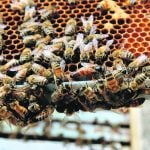WASHINGTON, D.C. — Pat Roberts still sounds like a proud papa when he talks about the 20-year-old Freedom to Farm bill, although he doesn’t agree with all the ways it has grown up.
“Farmers still have the freedom to farm,” Roberts, who chairs the U.S. Senate’s agriculture committee, said about his famous attempt to wean farmers off government programs when deciding what to plant and seed.
“They may have other bells and whistles in the farm bill, but when the farmer puts that seed in the ground, that farmer makes that determination according to the market conditions as opposed to the federal government.”
Read Also

Feedgrain prices expected to plummet
A massive U.S. corn crop is keeping a lid on Canadian feed barley prices.
Freedom to Farm was the name given to the 1996 U.S. farm bill, a gigantic piece of legislation that governs billions of dollars in government money for farm and food stamp programs.
Before 1996, farmers often seeded crops based partially on differential payments and coverage they would receive for different crops. Future prices were only part of the decision.
This often resulted in decisions that made financial sense for individual farmers but not in terms of overall agricultural economics.
Freedom to Farm, of which Roberts was the chief architect, sought to redesign programs so that farmers wouldn’t be making their decisions based on future government payments. Instead, they would be based solely on future prices and how that affected per acre profitability for each crop.
This not only made it easier for acres to flow between corn, soybeans and wheat but also gave smaller acreage crops a better chance of being added to farmers’ rotations. Before Freedom to Farm, many crops had no government coverage at all, which prompted farmers to shun them.
Numerous amendments have diluted some of Freedom to Farm’s attempted purity since it was introduced, but Roberts insisted its soul is still intact.
“The bill, Freedom to Farm, still exists, and if you go around this country and look at the change in the cropping decisions made by farmers, you can see that they went to crops where they could get better profit than they had,” said Roberts.
His own state of Kansas is a prime example. Its crop rotations changed radically after 1996 from its previous “wheat, and more wheat, and more wheat and summerfallow.
“Now today, the soybean industry, the corn industry, the wheat industry, the canola industry etc., etc., the farmer has an opportunity, and you don’t see much summerfallow.”
Negotiations for the next farm bill are expected to begin in the next year, and Roberts said he is keen to maintain the core principles of Freedom to Farm.

















